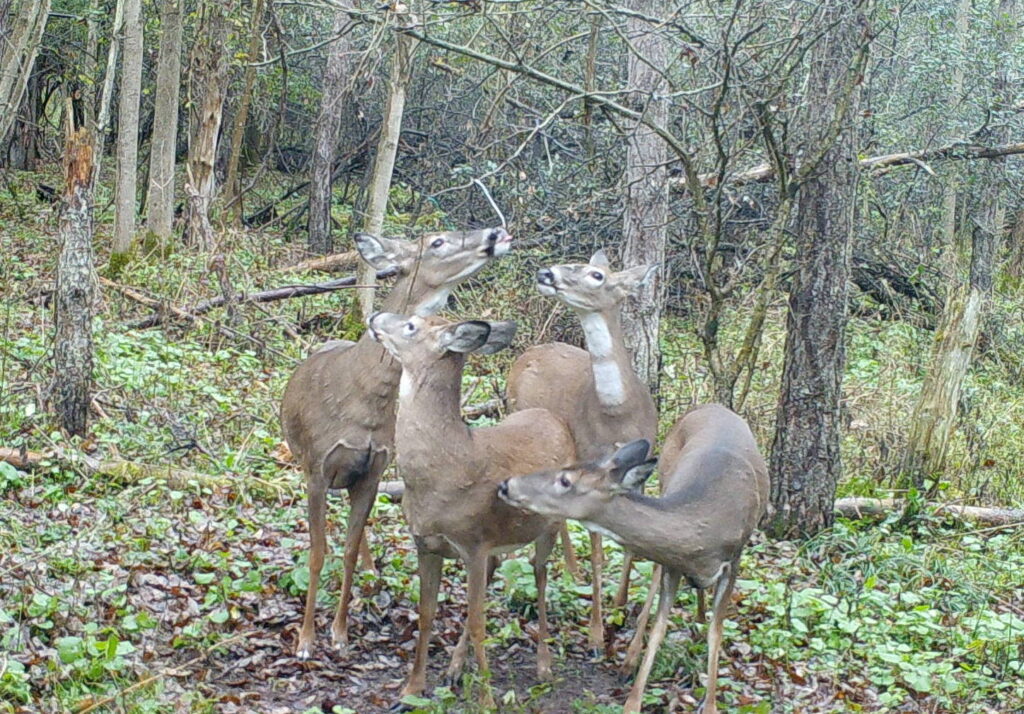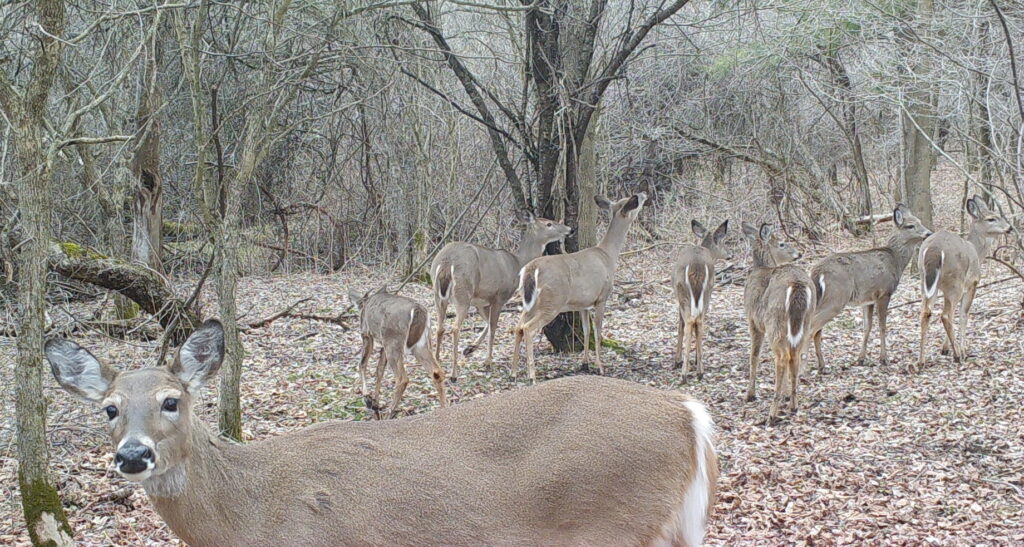Queen of the female whitetail society
By Oak Duke,
What do you see when you look through glass and observe a small group of deer?
Most think of whitetails as an amorphous clique of animals, no structure very little shape, rhyme or reason as they move past.
Their behavior seems random…unscripted.
And they… well to our way of seeing… kind of look all alike…just deer.
No antlers or even distinguishing marks to be able to tell one from another.
But that vision is just the surface.
Deer have evolved by creating two very different and distinct societies, one, a male fraternity and the other, a female-based family unit.
Bucks and does live apart for just about all the year, yet communicate so well at one time that as a result, perpetuate the species.
There are two societal groups comprised of individuals in a pecking order.
In fact, each hyper-local micro-group functions as a very organized unit with rules and guidelines, carved into their individual DNA.
Whitetails thrive under these two very rigid hierarchical orders, as males and females.
That group of antlerless female deer we so often see is in fact a very cohesive and structured family unit, not unlike, in some ways, the male side of the whitetail deer, the Bachelor Group.
While the males, the bucks of the specie, group up in mostly unrelated bachelor fraternities; the females of the species live in a cohesive unit based upon kinship.

A Matriarchal doe leads female deer groups, those small herds.
She is the leader of that society that coexists side-by-side with the Buck society, throughout the range of the whitetail deer, from Mexico, spanning most of the US, and into Canada.
She has the power and control of the ubiquitous Doe society that she can be credited for physically producing.
To better understand what we are looking at, we might be helped by a breakdown of the hierarchy in that rigid female society, functioning to some degree as a meritocracy allowing, as does the Bachelor group, upward mobility to superior members.
At the top of the leader board in rank is what is termed by many deer researchers as the Matriarchal doe.
Those of us who are deer hunters have used other terms such as “long-nosed doe” to accurately describe this, wise and crafty queen of whitetail society whose snout extends further as her years tick by. Her fawns have short, stubby little muzzles in contrast.
She may be a great-grandmother, but more likely a great-great-grandmother, or for that matter, who knows how many greats…she could be?
Her daughters and granddaughters and many of their youngsters, each has learned, year after year from her, not only just how to survive, but how to thrive and reproduce.
The Matriarchal doe is often, but not always, the largest doe in a relatively small cohesive herd. She determines when and where her daughters go to feed, bed, and forage. And she does not tolerate encroachments from other unrelated does…or even most bucks until the Rut.

She drives away with flailing hoofs, all who trespass into her realm.
However, in springtime when it is time for her to drop her fawns, (usually in May and June in Western New York,) she turns on her daughters and granddaughters, chasing them away from the most preferential cover and best birthing area.
Her fawns, usually twins, always have the greatest chance for survival being located in the choicest habitat. She is an excellent mother, having done it before, many times.
Her daughters, who are probably also pregnant, usually carve out their own birthing sites adjacent to her in nearby woodlots.
When fawns begin foraging a bit on their own, usually in July, she will lead them into a communal staging area, and there, meet up with her daughters who are usually being trailed by fawns of their own.
By the end of summer, the female whitetail society will have reformed and remain intact as a cohesive unit, even though it will be sporadically impacted to a degree by the Rut or breeding season, in October and November.

Second in command to the Matriarchal doe are what could be termed Secondary Matriarchs. They are often leaders of a small group of does, usually a couple fawns, and maybe a yearling we so often see. These younger matriarchs are often grandmothers, but have not achieved the age or status of the true Matriarchal doe, who when feeding always gets paid her deference.
Next down the chain of command in the doe hierarchy are the yearling does, who may or more or may not as yet have raised fawns of their own.
And at the bottom of the pecking order in the female whitetail society are fawns, both male fawns (Button bucks,) and doe fawns.
For the first year, buck fawns act for the most part as does and fall into line into the doe group, under the auspices, though not always seen as kindly, of the Matriarchal doe that could indeed be his great-great-great-great-grandmother. Though to us, she’s only seven or eight years old.
But buck fawns remain with the females for only a short time and are tossed out of the Doe society after one year or so, to make it on their own, and after dispersing, pass muster and become members of that other whitetail society known as the fraternal Bachelor group.

Oak Duke/Wellsville, NY/ January 2024
Facebook pages:
Whitetail Page: www.facebook.com/Oak.Duke.whitetail.page
Duke’s Honey: www.facebook.com/Dukes-Honey-513590015445371/







